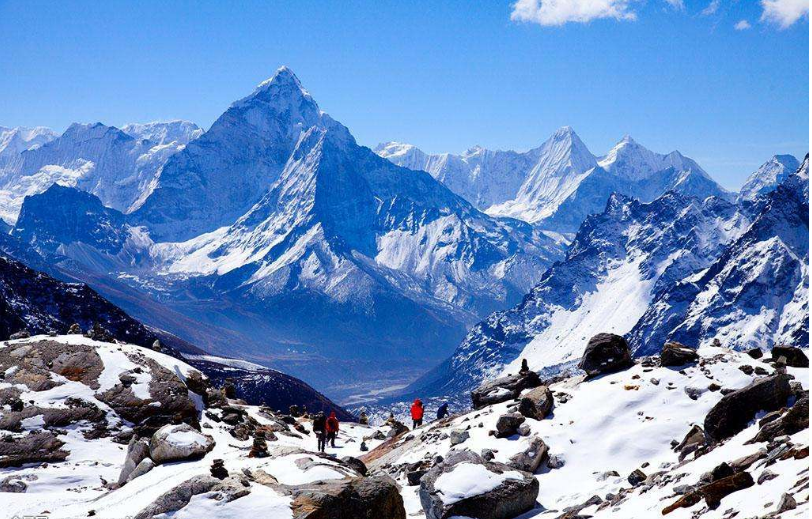Bodies of missing Icelandic climbers discovered in Himalayas 30 years after disappearance
Scottish mountaineer shares emotions after friends’ remains found on Nepal-Tibet border.
A mountaineer who spent weeks searching for two friends who disappeared in the Himalayas more than three decades ago said he finally has some “closure” after their bodies were found.
Scottish climber Steve Aisthorpe, 55, was part of a doomed expedition to scale the Pumori mountain with Kristinn Runarsson and Thorsteinn Gudjonsson – last seen alive on 18 October, 1988.
The remains of the two 27-year-old Icelandic climbers were discovered last month by a US mountaineer at the edge of a glacier on the border of Nepal and Tibet.
Mr Aisthorpe, a mission development worker for the Church of Scotland, said it is likely his friends fell from the face of the mountain and their remains were carried away by a retreating glacier over the past 30 years.
The bodies were brought back to Kathmandu, the capital of Nepal, by a group of local climbers and a cremation service was attended by relatives, who then took the men’s ashes home to Iceland.
Mr Aisthorpe, of Kincraig near Aviemore in the Highlands, said: “The discovery of the remains of Thorsteinn and Kristinn after so many years have inevitably brought many emotions to the surface for all who knew and loved these wonderful guys.
“It has also brought people together and I pray will help with greater closure and, in time, peace. I plan to go to Reykjavik in Iceland to meet their families soon and pay my respects.”
Mr Aisthorpe said further clues about what exactly happened to the men might now emerge because two camera films were found in a pocket of a jacket and have been sent to a specialist in Australia for development.
During the four-man expedition up the challenging 23,494ft neighbour of Mount Everest, Mr Aisthorpe had begun to suffer from gastric flu. He, along with another ill mountaineer, descended to the village of Pheriche to consult a doctor.
He was told that it would take a week for him to recover, so he sent a message back to the camp suggesting Mr Runarsson and Mr Gudjonsson “should feel free” to make a summit attempt without him. They set off and were never seen again.
“I’ve never felt as alone as the day I arrived back at our high camp,” Mr Aisthorpe said. “As I worked my way upwards, I desperately hoped that Kristinn and Torsteinn had descended safely and were now lying in their sleeping bags in the tiny red tent camp.
“But the silence was palpable. Even as I finally reached and then unzipped the tent, I still nurtured a hope that the boys would be lying there, comatose, sleeping off the climb of their lives.”
Mr Aisthorpe said he summoned help and a helicopter search was finally launched five days after the men were last seen.
He added: “A couple of weeks later I left the area, convinced that Kristinn and Torsteinn must have fallen somewhere high on the face and their remains swallowed by the cavernous crevasse below.
“This was what I explained to their families and friends on a visit to Reykjavik shortly after my return from Nepal.”
Mr Thorsteinn and Mr Kristinn were considered to be Iceland’s leading exponents of Himalayan climbing at the time.
The tragedy did not put Mr Aisthorpe off Nepal or mountaineering. In the following few years he returned to the country each spring and autumn to guide on some of the smaller peaks before moving to the country for 12 years with his wife Liz and two sons, John and Scott.














